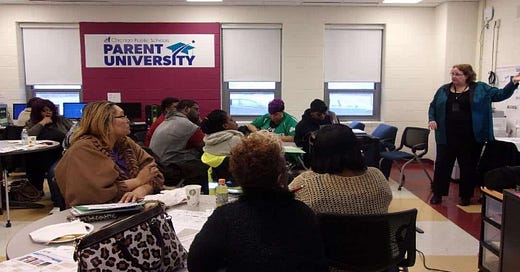Space, Place and Education
Spatial disparities and educational inequalities are closely intertwined
The International Day of Education is held on 24th January every year, so the 2025 event is not that far away. The first such day was proclaimed by the United Nations General Assembly in 2018. As the title implies the day is intended to look at education in a broad perspective, recognizing that the quality of education varies widely for young people and others with many millions still deprived of this basic right. The day was created to campaign for better education and improve access to education for all.
This day underscores the importance of education as a fundamental right and a public responsibility. It emphasizes the need for inclusive and equitable quality education at all levels to build a more sustainable, inclusive, and peaceful future. The International Day of Education serves as a reminder of the power of education to transform lives, foster tolerance, protect the environment, and drive economic growth. It’s an opportunity for governments at all levels, educational institutions, and individuals to reaffirm their commitment to education as a crucial element of societal development and personal empowerment.
City authorities are key players here, so it is timely to revisit the place of education in urban planning in these challenging times. Further impetus to this arises from the Education 2030 Agenda for the delivery of the United Nations Sustainable Development Goal for education (SDG4) to ensure universal access to quality education. As educational planning has become a key component of the global urban development strategy, many countries have decentralized urban planning and development, including education to local authorities and organisations who now face the task of implementing a local response to these global ambitions.
Whilst studies of urban planning are quite widespread, relatively few of them have explored how municipalities plan and manage education in their different contexts although there is a growing body of work associated with the Learning Cities networks supported by the UNESCO Institute of Lifelong Learning (UIL) and by the Pascal International Observatory based at Glasgow University.
Promoting demand and stimulating supply
If cities are to achieve the goals set out in the policies referred to above – access to quality education, equality of opportunity, innovative local economies – they need to both promote demand for learning and stimulate its supply. This extends beyond formal education in schools and colleges to embrace continuing education and lifelong learning. Schools cannot do it all. As I wrote in an earlier piece, city planning for learning must go beyond schools and skills. Cities need to leverage community assets, social networks and personal enthusiasm to extend the learning reach beyond the classroom and into communities and workplaces. Gross provides some interesting examples from 3 cities in the US where those supplying learning opportunities and those demanding learning opportunities opt in to information ‘action hubs’, but point out that if such schemes are to impact on inequality ways must be found to ensure equal access to the programmes on offer.
The concept of the learning city embraces both demand for and supply of learning opportunities. A learning city is one which has an explicit commitment to placing learning and innovation at the core of its development. A learning city promotes learning for all. It mobilises its resources in every sector to promote inclusive learning from basic to higher education. The concept embraces formal learning in schools, colleges and higher education but also learning in families and in the community, in the workplace, by businesses and through shared culture.
There is a growing number of accounts of how a very diverse range of cities have approached this commitment to learning. For example in Australia lifelong learning has been promoted through an urban village model where learning policies became part of the urban village concept to drive empowerment and inclusion objectives. Cork and Limerick in Ireland provide examples where an annual Lifelong Learning Festival is used as a strategy to widen participation in lifelong learning which in turn has contributed to building a learning culture in the city to support enterprise. Strengthening the role of cultural institutions as agents of social change has been addressed through developing the roles of museums. Enhancing a sense of place and place identity can be enhanced by physical planning and placemaking.
Education in urban planning
I have been making a case that education and learning should be at the centre of strategies and policies for economic development and innovation, improvement of the environment and for the well-being in communities.
Urban planning has evolved from an emphasis on physical transformation of areas in cities to a more complex view of social change to improve opportunities and the quality of life of residents. This social dimension becomes central to the longer-term objectives for sustainable community development. It can involve what amounts to a renewal of local attitudes and culture and the re-use and re-purposing of otherwise abandoned heritage spaces. There is a recognition that spaces and places in an urban context are important dimensions of education.
However there is also a view but that current new urbanism and placemaking activities do not fully connect with education planning especially with this broader concept of learning in mind. Educational inequalities and spatial disparities are closely intertwined. Just as learning can have strong individual benefits it is becoming clear that the distribution of educational opportunities can have a strong influence on social cohesion, strengthen social networks and is associated with greater likelihood of employment, and reduction of poverty and income inequality. It would thus be expected that education would also be a field of action for urban planners, architects, and urban designers.
Heinrich and Million (2022) refer to the concept of ‘sociospatial educational landscapes’ to describe examples in several German cities where local education policies have been interwoven with planning and urban design. These contrast with the much more frequent ‘landscape-led’ regeneration projects which often make no reference to the role of education at all.
There are some good examples in the UK and elsewhere where urban regeneration schemes have been education- led. Universities and Higher Education Institutions have acted as promoters of education in the community and can offer support and evaluation to local are project development teams.
Local authorities in many countries have responsibility for the provision of formal education and for community education. As a result of reductions in local authority spending, In the UK this latter function is often restricted to the co-ordination of support to voluntary organisations as service providers. However there is an encouraging number of authorities including learning hubs or education campuses in their plans for new developments. These commonly include not only schools, but also other services such as libraries, advice centres and maybe sports facilities for local residents. Essential to this promotion of learning and opportunities for learning is the physical provision of meeting places and open spaces which are accessible by suitable public transportation.
Often in partnership with other stakeholders such as Universities and colleges, some authorities are promoting business learning through innovation centres and science parks.
Learning at the centre of place-based policy
The argument here is that the role of learning is key to the making and re-making of places. The role is extensive but complex, but not often explicitly acknowledged in policies for urban development and local communities. Even the well-known Scottish community planning tool does not do so. It is surely time to put this right.
Further reading
Gross, Bethany: The Future of Education: How Cities Can Leverage Community Assets, Social Networks and Personal Passions in Extending Their Learning Systems Beyond the Classroom, The 74 Mar 2019
Heirich A-J and Million A: Educational Inequality and Urban Development- Education as a Field for Urban Planning, Architecture and Design
Marisol Silva-Layo et al: Urban Poverty and Education. A systematic Literature Review, Educational Research Review, Vol29, February 2020
Osborne M, Tibbitt J and Kearns P (eds): Learning and City Futures: Addressing the Policy Challenges, Pascal International Observatory, 2024





